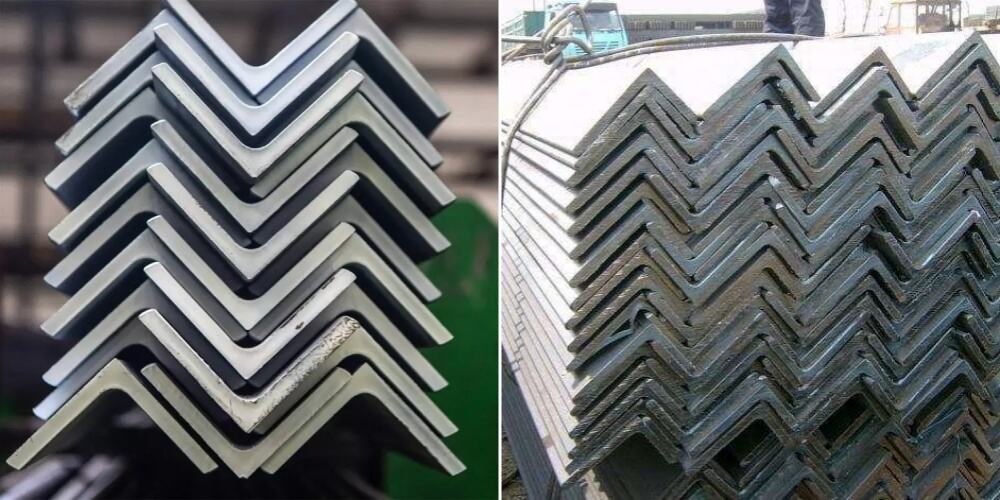Angle steel is a common metal profile, widely used in many fields such as construction, machinery manufacturing, bridges, shipbuilding, electricity, transportation, etc. Due to its special cross-sectional shape and excellent mechanical properties, angle steel plays a key role in various structural members and support systems. This article will introduce angle steel in detail, hoping to help you.
What Is Angle Steel?
Angle steel, also known as angle iron or L-shaped steel, is a long strip of steel with an "L"-shaped cross-section, usually made of carbon steel or stainless steel. The two sides of the angle steel are usually perpendicular to each other. It can be used alone or in combination with other components. It is an important structural material.

Chemical Composition:
|
Grade
|
C
|
Mn
|
P
|
S
|
|
Angle Steel
|
<0.22%
|
0.30-0.65%
|
<0.060%
|
<0.060%
|
Classification Of Angle Steel:
According to different standards and production processes, angle steel can be divided into many types:
1. Classification by side width:
- Equal angle steel: The width of the two sides is equal.
- Unequal angle steel: the width of the two sides is different.

2. Classification by material:
- Carbon steel angle steel: made of ordinary carbon structural steel or low alloy steel, with good mechanical properties and economy.
- Stainless steel angle steel: made of 304, 316 and other stainless steel materials, with excellent corrosion resistance.
- Galvanized angle steel: a layer of zinc is covered on the surface through hot-dip galvanizing or electro-galvanizing process to improve corrosion resistance.
3. Classification by manufacturing process:
- Hot-rolled angle steel: formed by high-temperature rolling, with good strength and toughness.
- Cold-bent angle steel: formed by cold bending, with higher precision but slightly lower strength.
Appearance Quality:
The surface quality of angle steel is specified in the standard, and generally requires that there should be no defects that are harmful to use, such as delamination, scarring, cracks, etc.
The allowable range of geometric deviation of angle steel is also specified in the standard, generally including curvature, side width, side thickness, top angle, theoretical weight, etc., and it is stipulated that angle steel shall not have significant torsion.
Application Of Angle Steel:
Angle steel is widely used in various building structures and engineering structures, such as beams, bridges, transmission towers, lifting and transportation machinery, ships, industrial furnaces, reaction towers, container racks and warehouse shelves.
How To Choose?
When selecting and using angle steel, the following aspects need to be considered:
- Material selection: Choose the appropriate material according to the application environment, such as carbon steel, stainless steel or galvanized steel.
- Specification matching: Choose the appropriate specifications according to the load-bearing requirements, including equal-leg angle steel or unequal-leg angle steel.
- Quality inspection: Ensure the surface is smooth without cracks, pores or other defects.
- Storage and maintenance: Store angle steel in a dry and ventilated environment to prevent corrosion.
We are a professional steel manufacturer. If you have any needs, you can contact us at any time!
 +86 17611015797 (WhatsApp )
+86 17611015797 (WhatsApp )  info@steelgroups.com
info@steelgroups.com
